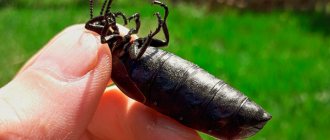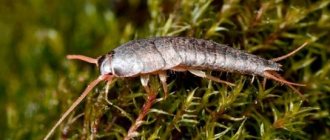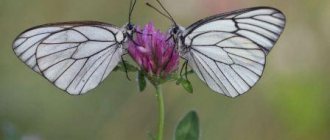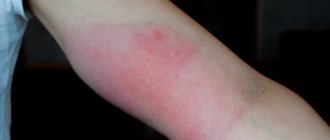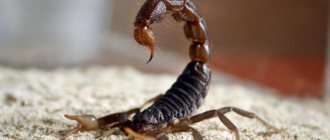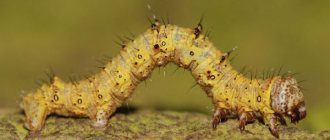Good day to all!
This article is not about a piece of clothing or even a plastic bag (although this is exactly the conclusion one could draw from reading the title), but about a beetle that I encountered in a village fifty kilometers away from the nearest regional center. Zhuque, whose full name sounds like an ordinary T-shirt (black) . This chance meeting slightly enriched my understanding of the world around me, which I would like to share with you.
Actually, voluntary self-isolation during the May holidays from civilization and its benefits (especially television and the Internet), allowed us not only to unload from the constant information stress that the media tries to crush us with every day, but also to spend time with the child in nature. And nature in the village is very close, just go out the gate and climb the nearest hill. On the hills, my daughter and I, as usual, caught green lizards and examined various beetles. Until we came across a very strange beetle, never seen before. So, welcome to one of the weekdays of an amateur entomologist)
Looking for information
I was puzzled by the search for information upon returning to the city. In response to a photo of a beetle sent to relatives on Viber and the question “what kind of animal is this?” They answered me almost immediately: “black blister beetle” and sent me a link. I myself didn’t think of using photo search in Yandex or Google.
There is little information about this beetle on Wikipedia - only a few paragraphs. But the impetus for further search for information about the unusual creature was an article from this very resource. More precisely, a couple of sentences that completely captured the imagination, which I will specifically quote here:
“Young larvae of the common bluegill disperse over long distances, climbing onto flowers and attaching themselves to bees and other flying insects. To attract these insects, a group of larvae can themselves represent a flower bud.” Wikipedia
As a result, my attempts to learn a little more about the insect lasted for several evenings, during which I read several extensive articles about different types of T-shirt beetles and watched a popular science film that talked about them. But the more interesting the process was. Actually, below are the modest results of the research that I promised to share at the beginning.
How to get rid of it?
You can deal with insect larvae using an effective folk method: in the spring and summer, water the soil with a decoction of onion peels (take a kilogram of onion peels for 10 liters of water, let it sit for five days). Dilute the resulting composition with water in equal proportions. Carry out manipulations in the warm season, when the larvae are close to the surface.
Use traps:
- coat a shallow container, a basin, with a sticky substance, for example, grease. Place a light source and bait (a little manure) on the bottom. When darkness falls, place the product in an open area. Such a device will catch not only dung beetles, but also other pests in the garden plot;
- take a two-liter bottle, cut off the top. Make four small holes in the walls and thread the cord through them. Place bait in your traps, hang them on trees, or place them near the beetles' favorite spots.
They do not produce special insecticides against dung beetles, because few people want to fight these insects. There are no special preventive recommendations against the appearance of dung beetles. The insect is absolutely harmless and brings great benefits to the garden, including the soil.
Video
General information
The common beetle (Meloe proscarabaeus) is a large flightless black or dark blue beetle with a small head and a giant abdomen. The wings are completely absent, the soft abdomen on top is partially covered by shortened, diverging elytra. The limbs are equipped with spurs at the joints and tenacious claws. The antennae are segmented and distinct.
Despite the terrifying appearance of the black T-shirt, the diet of adult individuals consists exclusively of plant foods, which they absorb in large quantities. As a rule, adult beetles feed on field and meadow herbaceous plants, but they can also eat sprouts of field and garden crops, but due to the small number of insects, the damage they cause is insignificant.
The size of a female T-shirt beetle can reach 4-5 cm (I came across this largest representative of this species). The female has a larger and softer abdomen. The male of the common jersey is noticeably smaller (one and a half times) and more graceful; its distinctive feature is the curled antennae used in the ritual of courting the female.
The lifespan of adult insects is short. Males of black t-shirts die immediately after mating, females - barely having time to lay eggs. Concern for survival in the case of a T-shirt of ordinary nature is implemented with a huge “margin”, as with most insects. Often, a female manages to make several clutches with a total number of eggs from 2 to 10 thousand, of which only a few are destined to go through all stages of development. Laying is done in burrow tunnels dug in the soil. It takes a female black jersey 2-3 hours to build each such burrow. One can only envy her persistence in building nests for future offspring.
The body of these representatives of the Coleoptera order contains up to 5% cantharidin - an organic compound that is dangerous to the health and life of people and animals, which can cause blisters when it comes into contact with open areas of the skin, and if it gets inside the body - severe irritation of the mucous membranes, bleeding, vomiting, damage to the liver, kidneys, cardiac activity and central nervous system. Wikipedia has a short article on cantharidin and its toxicity. In a life-threatening situation, jersey beetles secrete from the joints of their legs an oily, sharp-smelling hemolymph containing cantharidin and capable of poisoning a small animal to death. Therefore, there are no people willing to dine on insects.
The common tankard has a fairly wide habitat and is distributed in many countries of the world. The varieties of these insects living in Russia (purple (blue) T-shirt and black T-shirt) are listed in the Red Books of certain regions of our vast country - due to their small numbers and as endangered. In particular, in the Red Books of Moscow, Moscow, Leningrad, Rostov, Ryazan, Vologda and Nizhny Novgorod regions, Mordovia and Tatarstan.
Insects are found in meadows and steppe zones, in open spaces near places where wild solitary bees live, with which the life of bees is closely connected - insect larvae parasitize wild bees (travel with them and feed at their expense). They cannot live off domesticated honey bees, although they can sometimes cause trouble for apiary owners by getting into the hives with the bees.
Ants insects
Nomadic ants
These creatures are truly dangerous. Nomadic (wandering) ants are known for their incredible aggression. These creatures, unlike other types of ants, do not build their own anthills.
They create colonies that migrate regularly
from one place to another. During the day they are always on the move, hunting for small insects and vertebrates.
In one day, one colony can kill about half a million
small animals and insects.
Ants Bullets
These large tropical ants (Paraponera clavata) have a strong sting. Ants got this name because victims of their bites compare interaction with this ant to being shot.
After a bite, a person feels severe pain and constant throbbing for 24 hours. Among some Indian tribes, this type of ant takes part in rituals to dress boys into adulthood.
Often boys experience temporary paralysis of the stung fingers and even blackening. During the study of the poison contained in the bodies of these creatures, a paralyzing neurotoxin, poneratoxin, was isolated.
Fire ants
These ants have a strong sting and an aggressive venom whose sting is similar to a flame burn.
This is where their name comes from.
More often under this name you can find the red fire ant, which is widespread throughout the world. There are numerous cases of human contact with this ant, which resulted in severe consequences, anaphylactic shock and even death.
Siafu Ants
The main habitat of these creatures is East and Central Africa, as well as tropical Asia. Insect colonies number up to 20 million individuals, and all of them are blind
.
They travel based on pheromones. Colonies do not build permanent anthills for themselves; they roam from place to place. On the way, any invertebrate animals are attacked.
Moreover, not everyone attacks, but a special group of soldiers who sting with their hook-shaped jaws all the victims they come across. The jaws of these soldiers are so strong that in Africa they are used to secure stitches.
According to statistics, 20-50 people die every year from the bites of these creatures.
, old people and children are especially sensitive to their bites. Ants are extremely aggressive, especially when it comes to protecting their colony, which may accidentally be attacked by a person.
Tricks of evolution
The common T-shirt beetle confirms by its very existence that everything in the world is not an accident, but a natural result of the karma of evolution. In light of the amazing facts about this insect, calling it ordinary is, to say the least, strange.
Flower larvae, traveler larvae
After hatching from the eggs, the black jersey larvae within a few hours crawl around the area adjacent to the burrow in search of plants. The survival instinct drives the larvae to the very top, where they gather in large numbers on the leaves and inflorescences of flowering plants.
If the larvae come across a non-flowering plant, they are able to organize and jointly depict inflorescences, actively responding to the buzzing of bees and bumblebees flying past. In the still from the popular science film below, a group of common larvae successfully mimic a clover-like inflorescence.
Evolution has incorporated this mechanism into the behavior of insects for the purpose of survival of the species. T-shirt larvae try to attract wild bees in this way. If a bee lands on a plant occupied by larvae, they quickly move onto it in order to get into the wild bee’s burrow, destroy its offspring, and then the food supplies prepared by the bee. Fortunately, only a small percentage of the larvae manage to wait for their bee and survive.
Once in a bee nest, the larvae of the common jersey beetle (triangulins) molt after some time, turning into blind worm-like parasites with short legs that feed on the results of the labor of wild bees. Subsequently, after several molts and active growth throughout the summer, in the fall the larva burrows deeper into the ground (to a depth of 10 cm), and overwinters in a self-created cocoon to pupate in the spring and transform into an adult insect in late April-early May.
Aphrodisiac for female firebug
Despite the fact that the common t-shirt beetles themselves are parasites, there was an insect in nature that mastered the method of using t-shirt beetles for an important mission - the continuation of its own species.
During mating season, a male fireflower beetle (Pyrochroidae) finds a female blackjacket and follows her until he manages to bite her. This is necessary in order to obtain the very poison cantharidin, secreted by the T-shirts when they are attacked. The fact is that male fireflowers use cantharidin as an aphrodisiac to attract females of their species.
The female black jersey I found did not secrete poison from the joints of her legs. Although, before releasing it back into its natural habitat, I repeatedly picked it up, examining it, turning it over and unfolding it to photograph it. So, by luck, I was able to avoid a chemical burn and subsequent blisters.
Literature
- Du Merle, P. D. Les hôtes et les stades pré-imaginaux des Diptères Bombyliidae: revue bibliographique annotée.
//Bulletin. de. la. Section. Regionale. Ouest. Palearctique. (Organisation. Internationale. de. Lutte. Biologique). 4:1-289. - Evenhuis, N. L. and Greathead, D. J. World Catalog of bee flies (Diptera: Bombyliidae)
. Backhuys Publishers Leiden. - Hull, F.M. Bee flies of the world.
The genera of the family Bombyliidae. // Bulletin of the United States National Museum No. 286. Smithsonian Institution Press, Washington, DC - Yeates, D. K., . Cladistics and classification of the Bombyliidae (Diptera: Asiloidea).
// Bull. Amer. Mus. Nat. Hist. 219:1-191. - Zaytsev, VF 1986. Comparative morphological review of the thoracic sclerites in Diptera of the superfamily Bombylioidea.
// Entomol. Rev. 65: 39-59. - Zaytsev, VF 1992. Contribution to the phylogeny and systematics of the superfamily Bombylioidea (Diptera).
// Entomol. Rev. 71:94-114.
Own observations
When carefully studying the appearance of the T-shirt, I never ceased to be amazed at the perfection of the shape of the insect and the geometry of the elements of its body: the cup-elytra, the ideally rectangular body, the triangular head, the antennae-beads.
I was especially struck by the beetle’s paws and their incredibly complex structure. I thought that a human hand, compared to the foot of an ordinary T-shirt, looks much simpler.
While looking at the beetle, I couldn’t help but think how good it is that we don’t live in the times of giant insects. Humanity would have a noticeable increase in problems if it were to encounter something like this. Well, or it simply would not have become the dominant species, destroying the world in which it lives.
Man often tries to classify representatives of the animal world (in particular, insects) based solely on his own (not always ideal) considerations of the beautiful and useful. However, we should not forget that there are other standards that differ from human ones. In nature, every type of living being has the right to a place in the sun, regardless of whether it is useful or beautiful for the person who evaluates it.
Spanish flies
Spanish flies are found in the south of the forest zone. The beetles have a metallic green body with a bronze sheen and have a pungent and unpleasant odor.
The hemolymph of all blister beetles is poisonous; in case of danger, they secrete droplets of it from the holes located between the shins and thighs of the legs (bleeding). When crushed on the surface of the skin, blister beetles cause dermatitis. The most commonly affected parts of the body are the arms, neck, and face. The hemolymph of t-shirts, spanks and blisters mainly affects the mouths of the hair follicles, which leads to the appearance of characteristic large blisters. The presence of wounds, scratches or wet skin increases the absorption of the poison and the subsequent development of general symptoms of poisoning. In severe cases, glomerulonephritis and cystitis develop.
Common beetle (photo)
Unfortunately, I didn’t have a lightbox and a camera with normal autofocus and capable of shooting macro at hand (as usual). Therefore, I took photographs with what I had - my Samsung J4 smartphone. The shooting process was further complicated by the fact that the ordinary T-shirt, despite its large dimensions and apparent clumsiness, turned out to be a rather nimble insect, unwilling to sit in one place even for a couple of seconds. All photographs were taken in motion, which also did not have a positive effect on the quality of the resulting photos.
I took a few shots by placing the insect on a piece of light corrugated cardboard. Fortunately, they turned out to be more or less contrasting and sharp, with sufficient detail for viewing the T-shirt beetle.
Remedies used for insect bites
Aloe. The juice is used for lotions and irrigations.
Elecampane. For snake or scorpion bites, you should drink an infusion of the root with wine. Preparation of infusion: 1 tbsp. pour a spoonful of powdered root into 250 ml of boiling water and leave for 15 minutes, then mix with wine in equal quantities.
For lotions, a decoction of the leaves is recommended: 1 tbsp. Pour 250 ml of hot water into a spoon, boil for 5 minutes, strain.
Potato. A compress with fresh grated potatoes will relieve itching and irritation around the wound.
Laurel. Fresh leaves are good to apply for hornet and bee stings.
Garlic. Fresh juice or gruel is used to lubricate bee and wasp bites.
Rabindranath Tagore
Of course, I could do without flowers, but they help me maintain self-respect, because they prove that I am not shackled hand and foot by everyday worries. They are evidence of my freedom.
T-shirt black (video)
In the Wikipedia article about the Mike Beetle mentioned at the very beginning, there is a reference to the documentary film “Venom. Achieving Evolution" (dir. Park Sunwoon, Republic of Korea, 2015). In the 3rd episode “The Poisonous War of Plants and Animals” of this film, several minutes (29:18-34:40) are devoted to the peculiarities of life (discussed above) of adult beetles and their larvae. I specifically indicated the timing, the full version of the film is on YouTube, it is easy to find through the internal search of the video service by typing in the search bar: Poison Achieving Evolution Episode 3.
I was lucky to find on YouTube some fragments from this film, specifically about an ordinary T-shirt, so it would be wrong not to add them here. The first fragment is about adult beetles, the second is about larvae. Screenshots were taken from these fragments to illustrate the point about the twists of evolution. The rest of the photos in the article are my own.
Are these insects dangerous?
Common mace is poisonous. At the slightest danger, the insect secretes an oily, viscous liquid. These secretions contain cantharidin, an organic non-protein poison.
In addition to T-shirts, carriers of this toxic substance are:
- barbel - red-breasted puffer, carpenter, Ussuri relict;
- Spanish fly;
- other beetles of the blister family.
On average, the insect body contains up to five percent pure cantharidin in its total biochemical composition. This substance is quite dangerous. When taken orally, a person requires 40 to 80 micrograms of pure cantharidin per kilogram of body weight to be fatal. This variation is explained by the varying degrees of susceptibility of the human body to the toxin.
Bullet Ant (Paraponera clavata)
A large, dark-colored ant, up to 2.5 cm, the most poisonous among ants. Place of residence: South America. Anthills are most often built near tree trunks, live in colonies, feed mainly on nectar, and in search of food they can move tens of meters away from the home.
The length of the ant's sting is up to 3 mm; the poison is stored in a bag in the form of a ball with a diameter of about 2 mm. The pain from the bite of this insect is similar to the pain from a gunshot wound, which is why these ants are called bullet. And also the peculiarity of falling from above, from the branches of a tree, onto the victim and biting, quite suddenly determined the name of the insect. Ants bite if they believe that approaching living creatures are dangerous for the anthill.
The pain from the bites lasts for a day, and sometimes longer. The poison is a strong allergen and includes a paralytic toxin. Even a healthy person can hardly bear the bite of this insect. If there is an allergic reaction to the poison, the consequences of the bite can lead to death.
Description of Sympetrum vulgatum
Insect classification:
- Order – dragonflies (Odonata).
- Family – true dragonflies (Libellulidae).
- Genus – compressed bellies (Sympetrum).
- Species: common dragonfly (Sympetrum vulgatum).
Body structure and coloring
Dragonflies from the genus Sympetrum or compressed bellies are typical representatives of the fauna of Russia. Their body length is 38-40 mm, of which the abdomen accounts for up to 28 mm. The head is large, well defined, mobile. In the imago it is wider than the thorax and is movably connected to the prothorax. The eyes are large, complex, and consist of 20-30 thousand individual facets. The upper part of the organ is responsible for recognizing the outline of objects, and the lower part distinguishes colors. The antennae are presented in the form of short thin bristles. There are three simple ocelli located on the crown. A black stripe runs across the brown head, between the crown and forehead. The mouthparts are of a gnawing type, with strong mandibles equipped with sharp teeth.
The insect's chest contains limbs and two pairs of wings. The posterior part of the prothorax has a vertical projection. A fringe of long hairs grows on it. Black stripes run along the chest seams. The back of the dragonfly is pushed back obliquely, so the wings are behind the limbs. Males of the common compressed belly have a red chest with three black stripes, females are yellow-brown, three stripes are also present.
Wings
Dragonflies are equipped with two pairs of wings. In heteroptera, the front pair exceeds the parameters of the rear pair. The wing plate is formed by two chitinous layers and reinforced by veins. Their length is approximately equal to the size of the body. The hind wings are widened at the base. The wingspan of Sympetrum vulgatum is 60 mm, the length of the hind wing is 24-29 mm, the length of the front wing is 33-37 mm. The venation is very dense, large veins contain hemolymph, small veins have no gaps. One of the significant areas is the pterostigma, a thickening in the front of the wings. Outwardly, it looks like a dark spot; during flight, it weighs down the top of the wing, allowing it to increase the amplitude of the flapping.
Limbs
The legs of the common dragonfly are black, with a yellow stripe running along the outside. Three pairs of limbs are designed to hold the insect's body and catch prey. They are not used for walking or running. The legs consist of 5 main parts:
- basin;
- trochanter;
- hip;
- shin;
- paw.
On the inside of the leg and thigh there are several rows of spiny bristles. The coxa is the thickest and shortest part of the limb. There are two sharp forked claws on the foot. Long limbs and spines allow them to form a “catching basket” to catch prey in the air.
Abdomen
The abdomen of the common dragonfly is flattened and wide. It consists of 10 full and one rudimentary segment. Each part is formed by an upper and lower chitinous shield. Thanks to the movable joint, insects can freely bend their abdomen. The structure of the organ of males and females is different. Males have special appendages on the last segment to hold the partner during mating. Their secondary copulatory organ is located in the lower part of the second segment. The female's genital opening is between the eighth and ninth segments. Females have an ovipositor. Males have a red abdomen with a black side stripe, while females have a brown abdomen with a black stripe.
Larvae
Dragonfly larvae are called nymphs or naiads. In appearance and structure they are strikingly different from the imago. Nymphs of the common dragonfly have a massive body 17-19 mm long. Breathing is carried out through internal organs - rectal gills. The larvae take water into the rectum, where gas exchange occurs. The body color is dark gray, greenish or red-brown. The nymphs are covered with a motley pattern.
Notes
- Life of animals. Volume 3. Arthropods: trilobites, chelicerates, trachea-breathers. Onychophora / ed. M. S. Gilyarova, F. N. Pravdina, ch. ed. V. E. Sokolov. — 2nd ed. - M.: Education, 1984. - P. 405. - 463 p.
- Key to insects of the European part of the USSR. T. V. Diptera, Fleas. First part. / edited by G. Ya. Bey-Bienko. - L.: Nauka, 1969. - P. 409-443. — 807 p. — (Key guides to the fauna of the USSR, published by the Zoological Institute of the USSR Academy of Sciences; issue 100.). — 5300 copies.
- Narchuk E. P.
Key to the families of dipterous insects (Insecta: Diptera) of the fauna of Russia and neighboring countries (with a brief overview of the families of the world fauna) / Volume editor V. F. Zaitsev. - St. Petersburg: Zoological Institute of the Russian Academy of Sciences, 2003. - P. 156. - 252 p. — ISBN 5-98092-004-8.
Chagas disease
Chagas disease is a parasitic infectious disease caused by single-celled microorganisms Trypanosoma cruzi. The virus enters a person’s bloodstream not only through a bite. Triatomine flying bugs are carriers of Chagas disease.
Even simple contact of a person’s skin with an insect or its excrement, which he leaves while feeding, can lead to infection. Therefore, taking it with bare hands is strictly prohibited.
How can you get Chagas disease?
The causative agent of the disease is the flagellate trypanosome. This protozoan parasite is found in tropical and subtropical climates. It enters the bedbug when it bites an infected person or animal.
Trypanosome lives in the body of the bug throughout its life. After one to two weeks, the insect can transmit the parasite.
One way to become infected with the parasite is through the bite of a triatomine bug. During the bite, it injects an anesthetic into the body, so the person does not feel pain and does not notice that he has been bitten. The insect stays on the host's body for 15-20 minutes. After feeding, it defecates on the skin; trypanosome can be transmitted through feces
It penetrates under the skin through microcracks in the mucous membranes or when carelessly rubbed into the eyes.
The infection can also enter the body in other ways:
- by contacting triatomine bug feces on food;
- through an infected pregnant woman to a child;
- by transfusion of contaminated blood;
- accidental contamination during laboratory research.
Diagnosis of Chagas disease
For timely detection and treatment of this disease, the following laboratory tests are performed:
- studying the patient's blood under a microscope;
- carrying out a serological reaction;
- peripheral blood examination.
Symptoms
Chagas disease negatively affects the cardiovascular, nervous system, and gastrointestinal tract. It is characterized by the appearance of the following symptoms:
- Strong headache;
- heat;
- swollen lymph nodes;
- decrease in pressure;
- diarrhea;
- nausea;
- redness of the skin;
- itching;
- dyspnea;
- pain in the abdominal cavity and chest;
- swelling.
Rarely, the initial stage of the disease is not accompanied by any symptoms at all. But parasites are still present in the blood.
Without timely treatment, the disease becomes chronic and gradually destroys all body systems, ultimately leading to death.
Treatment
Chagas disease is considered incurable. However, in the early stages it can be combated with the help of the drugs Nifurtimox and Benznidazole. These drugs are antiprotozoal and are agents that kill single-celled parasites.
In the chronic stage, these drugs are useless. But maintenance therapy can be carried out.
Prevention
There is still no vaccine for the infection, but the most effective way to protect against it is prevention. People at risk should adhere to the following rules:
- use a special mesh for windows and sleeping areas;
- maintain personal hygiene;
- undergo thorough examinations before blood transfusions and organ transplants;
- take permethrin-based products.
If parasites are detected, to protect your home, use products containing cypermethrin, cyfluthrin, deltamethrin and lambda-cyhalothrin and fenpropathrin.
